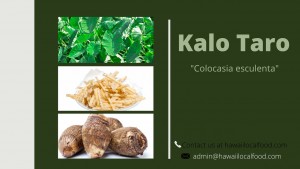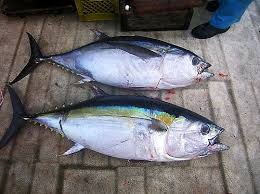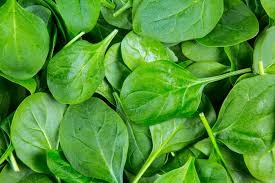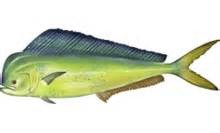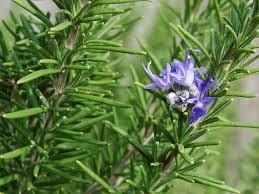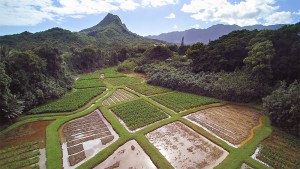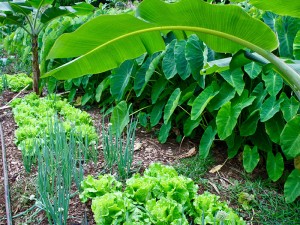Our Food Sellers and Farmers Our Mission is to connect locals to local food.
Kalo Taro
If you are not from Hawaii, you may find the term Kalo a bit confusing.
Well, it is normal since you are most familiar, perhaps with the tuber plant, Taro. But what is the difference between the two?
There is not much difference except that Kalo is a local term used by Hawaiians to refer to the same tuber Taro plant. Specifically, Kalo refers to the name of the first taro growing from the usually planted stalk.
Scientifically known as Colocasia esculenta, Taro is a tropical plant grown because of its edible root vegetable.
Moreover, it is the most widely cultivated species of several plants in the family Araceae because of its many uses, from the corms, leaves, and even petioles. It is initially produced in Asia but is now enjoyed around the world.
Colocasia esculenta is a perennial plant that grows mostly in tropical regions. It is best characterized by its edible root vegetable and starchy corm. It has rhizomes of different shapes and sizes, with leaves up to 40 cm 24.8 cm.
It has brown outer skin and white flesh with purple specks and has a mildly sweet taste and a texture similar to a potato when cooked.
Medicinal Value
Kalo is believed to be great for digestive health, cancer prevention, diabetes, blood pressure, eye health, skin health, general immune system health, and circulation.
It has vitamins A, C, E, K, B6, and other minerals and nutrients such as thiamin, riboflavin, niacin, folate, pantothenic acid, calcium, iron, magnesium, phosphorus, potassium, sodium, zinc, copper, and manganese.
Health Benefits
It helps in losing weight.
Taro root is an excellent source of fiber and other nutrients.
A cup (132 grams) of cooked taro has approximately 187 calories and at least one gram of protein and fat.
It also contains the following:
- Fiber: 6.7 grams
- Manganese: 30% of the daily value (DV)
- Vitamin B6: 22% of the DV
- Vitamin E: 19% of the DV
- Potassium: 18% of the DV
- Copper: 13% of the DV
- Vitamin C: 11% of the DV
- Phosphorus: 10% of the DV
- Magnesium: 10% of the DV
Due to its high fiber and resistant starch content, taro increases feelings of fullness, reducing calorie intake and helping you potentially lose weight and fat.
May reduce heart risks.
According to substantial studies, taro root may also help reduce the risk of heart disease. This finding is associated with the fact that this root crop is high in fiber and resistant starch, helping lower cholesterol.
It helps control blood sugar.
Taro root is a known starchy vegetable, which means it has two carbohydrates that can help regulate blood sugar: fiber and resistant starch.
Fiber is a carbohydrate, but humans cant digest it. Since there is no absorption, it has no impact on a persons blood sugar level.
Moreover, since it has resistant starch, which humans cannot digest too, its effects on the body do not affect the blood sugar level at all.
Possible anti-cancer properties
The compounds called polyphenols found in taro has some potential to reduce cancer risk. Although it still needs further studies, initial findings suggest that polyphenols, together with antioxidants, may combat cancer growth and protect the body from oxidative stress.
Diet-friendly
Taro is a versatile root crop that can be used in both sweet and savory dishes such as the following:
- Hawaiian poi: Steam and mash kalo into a purple-hued puree.
- Taro chips and cakes: Thinly slice taro, baked or fried into chips or cakes
- Taro tea: Blend taro in boba tea for a beautiful purple drink.
